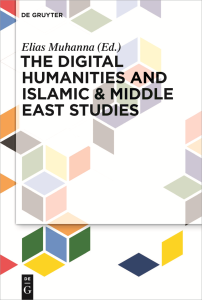This paper elaborates the tools used for mapping the density of news reports onto the city of Damascus and its hinterlands, which were developed in the context of my doctoral research titled “To whom belong the streets? Property, propriety, and appropriation: The production of public places and public spaces in late Ottoman Damascus”. The paper discusses the various technologies and their implications for the analysis of the results produced, against the backdrop of a case study on violent incidents.
The research is based on c. 7.000 news reports on events in Damascus between 1875–1914, drawn from the newspapers Lisān al-Ḥāl, al-Bashīr, Thamarāt al-Funūn, Ḥadīqat al-Akhbār, Suriye, and al-Muqtabas. The reports were excerpted, partially transcribed, coded for topic and locations, and stored in a relational database.[1]
In order to run a named entity recognition for locations on the database of sources, I produced a file of geocoded place names from written sources, old maps, secondary literature, and geographic authority files.[2] The named entity recognition then counts the number articles on a specific topic or containing a particular catch phrase for each known location. This is done running the data as XML files through XSLT transformations, producing a JSON data stream. The results are then mapped using the SIMILE Exhibit 3 framework [3], which provides customisable visualisations of the data stream on a base layer of maps to be displayed in any browser.
This approach allows to a) cope with a very large body of short written sources, to b) immediately recognise correlations of certain topics with specific locations, and to c) evaluate sources as to their biases.
Applied to the discourse on violence in late Ottoman times, we see a discourse on legitimate rule that produces a spatial dichotomy of the urban, civilised, peaceful centre and the pre-dominantly non-urban, backward, and violent populations of the peripheries. Armed Bedouins and Druze of the South become the epitome of the vicious (semi-)nomadic bandits threatening the urban “flock” under the protection of the Ottoman authorities. This dichotomy and the positive correlation between violence and distance from the seat of the government is also found in the topography of Damascus itself.[4]
- For this purpose, I used an off-the-shelf reference managing software, which stores all data in an SQLite database; www.thirdstreetsoftware.com, www.sqlite.org. ↩
- The most important authority file was the GeoNames database, which is licensed as CC BY and can be downloaded or queried. As I use the reference file of geocoded place names for various other projects, it adheres to the encoding standards of the TEI P5. ↩
- The SIMILE Exhibit 3 javascript framework is developed by the MIT and provided under CC BY at www.simile-widgets.org ↩
- I made examples available for violent incidents and riots. ↩
 We are pleased to announce the publication of a new edited volume from De Gruyter entitled The Digital Humanities and Islamic & Middle East Studies. Many of the articles in this volume were given as papers at the 2013 conference of the same name, organized by Middle East Studies at Brown University.
We are pleased to announce the publication of a new edited volume from De Gruyter entitled The Digital Humanities and Islamic & Middle East Studies. Many of the articles in this volume were given as papers at the 2013 conference of the same name, organized by Middle East Studies at Brown University.